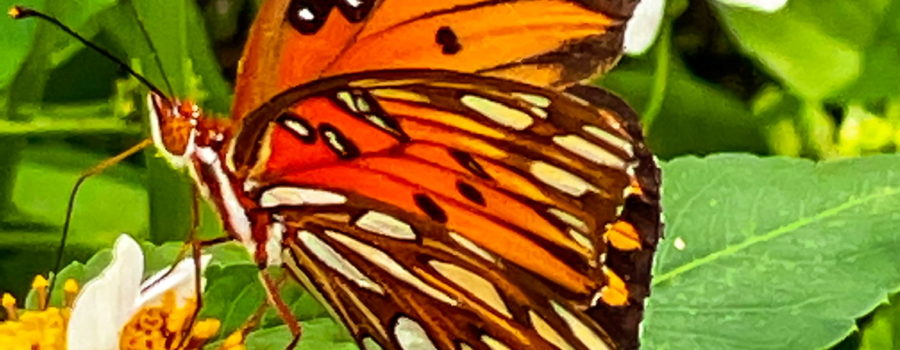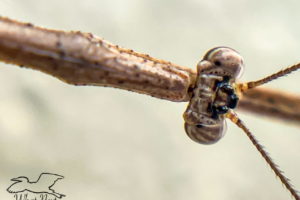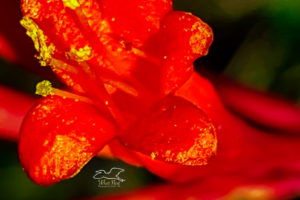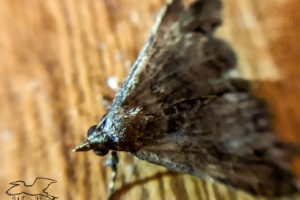The Gulf Fritillary is One of Florida’s Most Spectacular Butterflies

Every fall here in central Florida, we have an influx of beautiful orange and black butterflies. Last year, I had them around most of the warm part of the year, but this year I’ve only been seeing them this fall. They are gulf fritillary butterflies (Agraulis vanillae), a type of long winged butterfly. They are found in the southeastern United States, mostly Florida and Texas, Mexico, and sometimes Central America. They are a migratory species, moving into the northern parts of their range in the spring, and moving south during the fall. They produce multiple generations each year, and have a very interesting lifestyle.

Gulf fritillaries are known to be very fond of passion fruit vines, which is why I had so many last year and so few this year. Last year my passion fruit vines thrived while this year the spring drought that we had pretty much destroyed them. I’m hopeful that next year will be better for them. The adult butterflies like the nectar that the flowers produce, but more importantly, the leaves are by far the most preferred food for the caterpillars. The female butterflies lay their eggs singly on the vine leaves and the eggs hatch in a matter of days. The larval butterflies or caterpillars are a pretty bright orange color and they’re covered in black spines. Even though they look potentially dangerous, the spines are actually harmless. They don’t sting and in fact they are soft and flexible so they aren’t even good for poking you. What they are good for, though, is fooling predators into thinking that they sting. Pretty cool, huh?

The larvae go through five instars, and during those instar stages they feed on various parts of the vine leaves. The length of time that it takes them to move through each stage depends on the weather. In warmer weather they mature faster. The same holds true for the pupa or chrysalis stage. The adult butterflies usually survive about 27 days regardless of the weather. The adult butterflies are sexually dimorphic with the females being noticeably larger than the males and also usually lighter in color. Like the caterpillars, they have a unique way of defending themselves against predators, especially birds. They produce a foul smelling liquid that they release if they feel threatened, if they see birds overhead, or if they are grabbed. This liquid apparently makes them unpalatable to birds, which are their main predators.

Even though the caterpillars of the gulf fritillaries live almost exclusively on passion fruit vines, the adults will feed on quite a number of different flowers. The main ones they seem to be fond of here are the blackjacks, although I’ve also seen them on pokeweed, spotted bee balm, and tickseeds just to mention a few. They are generally found in open areas like woods edges, open grasslands, pastures, farm fields, parks, and yards. Males tend to attract females by releasing pheromones. The males will fly around looking for perched females that are ready to breed. Both sexes will mate with multiple partners. Males will also feed the females during breeding. It is believed that this helps the females to have more energy for the development and laying of eggs. As you can see, these beautiful little insects have a complex and interesting life cycle that varies from that of a lot of butterflies. Most of them have left this area now. They’ve headed down to south Florida or Mexico, but come spring they’ll be back again. I’m hopeful that the passion fruit vines will do better next year, and we can keep some of them around throughout the summer and that we’ll have caterpillars.

If you like beautiful nature photography and artwork along with captivating and informative nature and animal related content, then this blog has what you’ve been looking for. Join us and never miss another episode!





Recent Comments